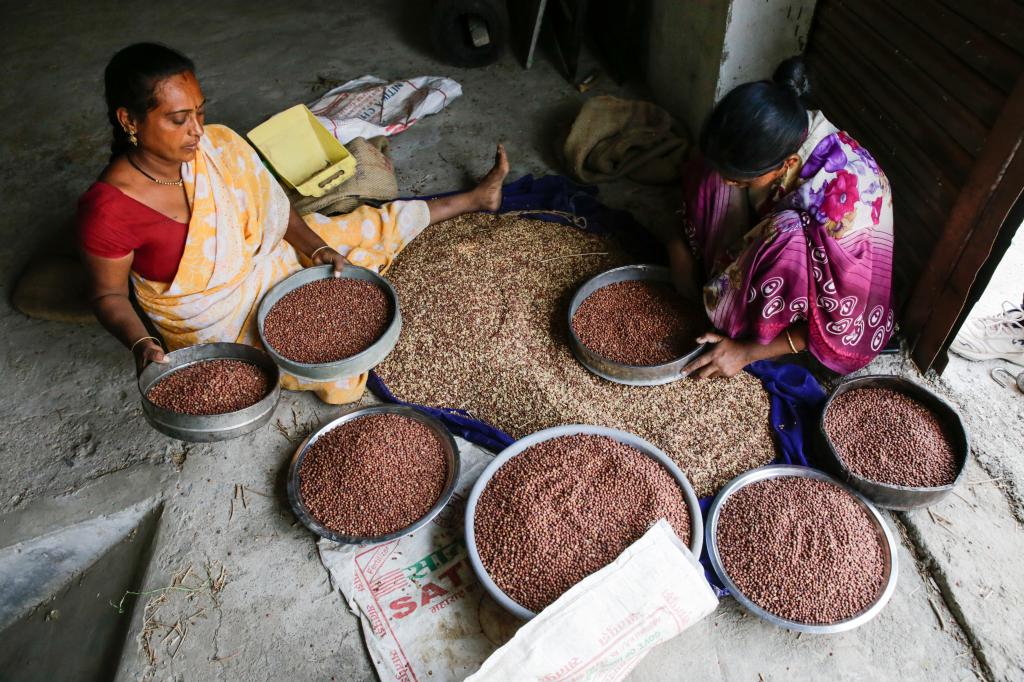|
Getting your Trinity Audio player ready…
|
By Richard Mahapatra
Food prices are increasing at an unprecedented rate worldwide, triggered by 2 years of COVID-19 pandemic-induced disruption and now the Russia-Ukraine war
The novel coronavirus disease (COVID-19) pandemic was pushed off global front pages last fortnight by food inflation. Food prices have leaped 75 per cent since mid-2020, the Food and Agriculture Organization (FAO) assessed.
In India, rural consumer food price has doubled in the year through March 2022, according to the All India Consumer Price Index (CPI) by the National Statistical Office (released April 12). At 13 per cent, the country’s annual wholesale inflation was at the highest in a decade. Food and fuel prices played a major role.
Such is the impact of inflation that the World Food Program (WFP), currently running one of its most expansive food relief operations in recent history, made a desperate appeal for further funding. Because, food inflation has significantly increased the cost of its day-to-day relief: It’s paying $71 million (Rs 544 crore) more per month now for the same operation level.
In the context of the Russia-Ukraine war, energy security came into focus. The world has been debating how the fossil fuel disruption will derail the planet’s efforts to reduce greenhouse gas emissions to stop global warming and resultant climate change. Fuel price is already rising and adding to overall costs of everything, including food production and transportation.
But, the war has also disrupted foodgrain supply and circulation further adding to the demand-supply equation. Extreme weather events continue to affect large swathes of areas growing food and thus bringing down overall production. To sum up, the most fundamental survival need is at stake.
This crisis exposes the globalised world’s another fault line. When the COVID-19 pandemic struck, an interconnected globalised world suddenly woke up to a situation where every country retreated and scrambled for self-protection; expectedly the rich world jealously colonised all resources needed to fight the pandemic leaving the rest helpless.
The food sector is also interconnected and interdependent, though perilously. WFP calls its aftermath a “seismic hunger crisis” gripping the world. In Africa and west Asia, the hunger crisis has already set in.
The World Bank has warned that each percentage point increase in food prices would push an additional 10 million people into extreme poverty. The impact of food inflation is impacting the world’s poor and developing countries the most, because most of these countries are also food importers. For instance, some 50 countries, mostly poor countries, depend on Ukraine and Russia for wheat, a staple grain.
Country after food grain-surplus country are now hoarding through curbs on export. This makes the availability of food grains difficult for deficit geographies.
In an unprecedented joint appeal, the heads of the World Bank Group, International Monetary Fund, WFP, and the World Trade Organization gave an urgent call:
We call on the international community to urgently support vulnerable countries through coordinated actions ranging from provision of emergency food supplies, financial support, increased agricultural production, and open trade… We also urge all countries to keep trade open and avoid restrictive measures such as export bans on food or fertilizer that further exacerbate the suffering of the most vulnerable people.
This appeal sounds similar to many such global solidarity calls made in the beginning of the COVID-19 pandemic. Probably, this is for the first time there is a universal call of crisis on food. Like in cases of recent such other crises including the COVID-19 pandemic, the globalised world is testing its efficacy both in letter and spirit.
